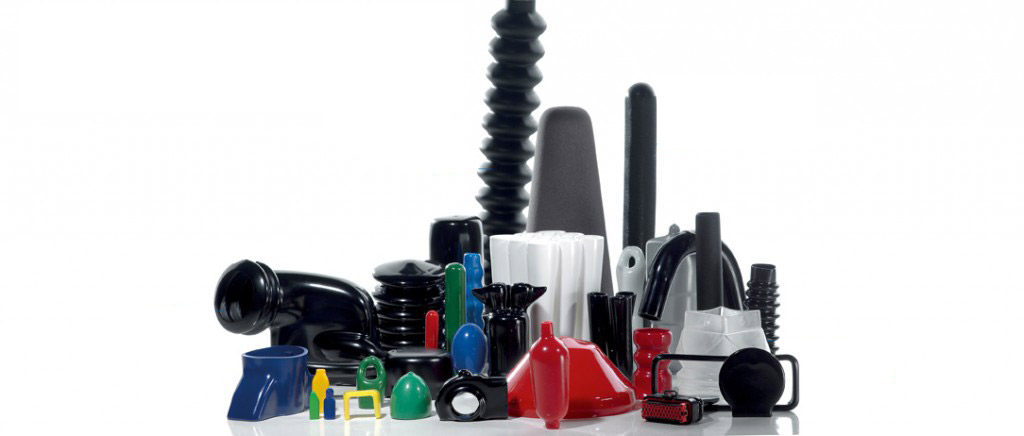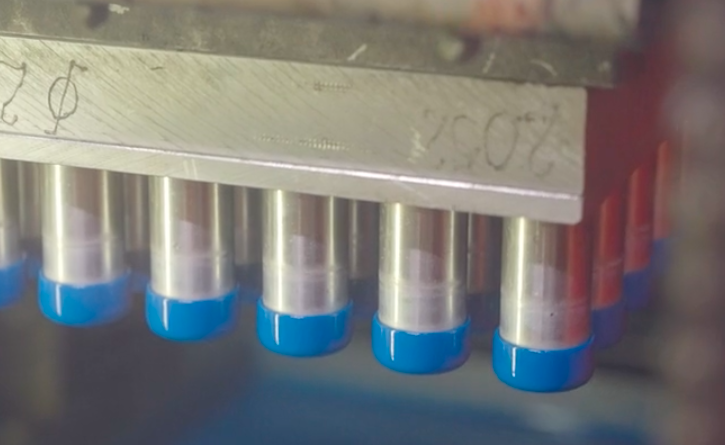A bath with liquid plastisol forms the plastic product
The underlying principle of the dipping process is a bath of liquid polyvinyl chloride (PVC) into which aluminium moulds are immersed. The PVC adheres to the mould like a skin, taking on the shape of the final product. The temperature of the mould and the immersion time determine the thickness of the plastisol. After dipping, the mould is heated again so the plastisol melts and hardens. The vinyl products are then removed from the moulds using compressed air.
The steps in dip moulding
- The mould is heated.
- The mould is fully immersed in heated liquid plastisol.
- When the set immersion time is over, the mould is removed from the bath.
- Once out of the bath, the vinyl-coated mould is heated again so that the plastisol melts and cures.
- The mould encased with the plastisol is cooled to room temperature.
- After cooling, the vinyl product formed through the dip moulding process is detached from the mould.
Suitable for standard and customised products
Dip moulding is mainly used for making plastic products with complex geometry. An excellent example of this is the range of vinyl caps, sleeves and covers from Caplugs. In addition to our standard products, Caplugs also uses dip moulding for fully customised vinyl products with unusual shapes and dimensions.

Vinyl caps, sleeves, and covers
Dip moulding is often used to produce larger series of vinyl caps as the customised moulds can be used repeatedly. For a high-volume series, the dipping speed and oven temperature settings can also be standardised. In the production of non-standard protective products, special moulds need to be designed and made. In this case, all settings for the dip moulding process have to be carefully redefined. Caplugs provides a full-service custom moulding process from prototype to finished product, including advising customers on finding the most cost-efficient solution for their product application.
Dip moulding has many advantages
Besides a favourable price-quality ratio, dip moulding has a number of other advantages. For instance, vinyl dip moulding and vinyl dip coating produce seamless and even products. In addition, the customer can determine the level of finishing in terms of colour, textures and thicknesses. Matt, glossy, and in whatever form, dip moulding offers almost unlimited possibilities. For more information, view the Caplugs product catalogue or contact us.


